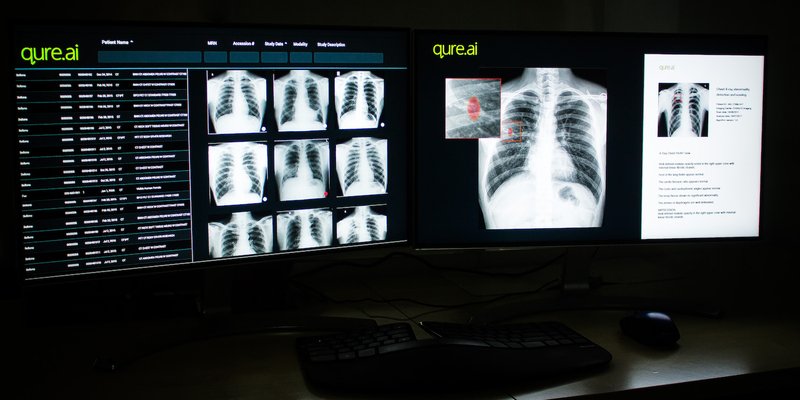
Company: Qure.ai Product: qXR
Comparing the Output of an Artificial Intelligence Algorithm in Detecting Radiological Signs of Pulmonary Tuberculosis in Digital Chest X-Rays and Their Smartphone-Captured Photos of X-Ray Films: Retrospective Study
JMIR Formative Research, 2024
Abstract
Background
Artificial intelligence (AI) based computer-aided detection devices are recommended for screening and triaging of pulmonary tuberculosis (TB) using digital chest x-ray (CXR) images (soft copies). Most AI algorithms are trained using input data from digital CXR Digital Imaging and Communications in Medicine (DICOM) files. There can be scenarios when only digital CXR films (hard copies) are available for interpretation. A smartphone-captured photo of the digital CXR film may be used for AI to process in such a scenario. There is a gap in the literature investigating if there is a significant difference in the performance of AI algorithms when digital CXR DICOM files are used as input for AI to process as opposed to photos of the digital CXR films being used as input.
Objective
The primary objective was to compare the agreement of AI in detecting radiological signs of TB when using DICOM files (denoted as CXRd) as input versus when using smartphone-captured photos of digital CXR films (denoted as CXRp) with human readers.
Methods
Pairs of CXRd and CXRp images were obtained retrospectively from patients screened for TB. AI results were obtained using both the CXRd and CXRp files. The majority consensus on the presence or absence of TB in CXR pairs was obtained from a panel of 3 independent radiologists. The positive and negative percent agreement of AI in detecting radiological signs of TB in CXRd and CXRp were estimated by comparing with the majority consensus. The distribution of AI probability scores was also compared.
Results
A total of 1278 CXR pairs were analyzed. The positive percent agreement of AI was found to be 92.22% (95% CI 89.94-94.12) and 90.75% (95% CI 88.32-92.82), respectively, for CXRd and CXRp images (P=.09). The negative percent agreement of AI was 82.08% (95% CI 78.76-85.07) and 79.23% (95% CI 75.75-82.42), respectively, for CXRd and CXRp images (P=.06). The median of the AI probability score was 0.72 (IQR 0.11-0.97) in CXRd and 0.72 (IQR 0.14-0.96) in CXRp images (P=.75).
Conclusions
We did not observe any statistically significant differences in the output of AI in digital CXRs and photos of digital CXR films.
Read full study